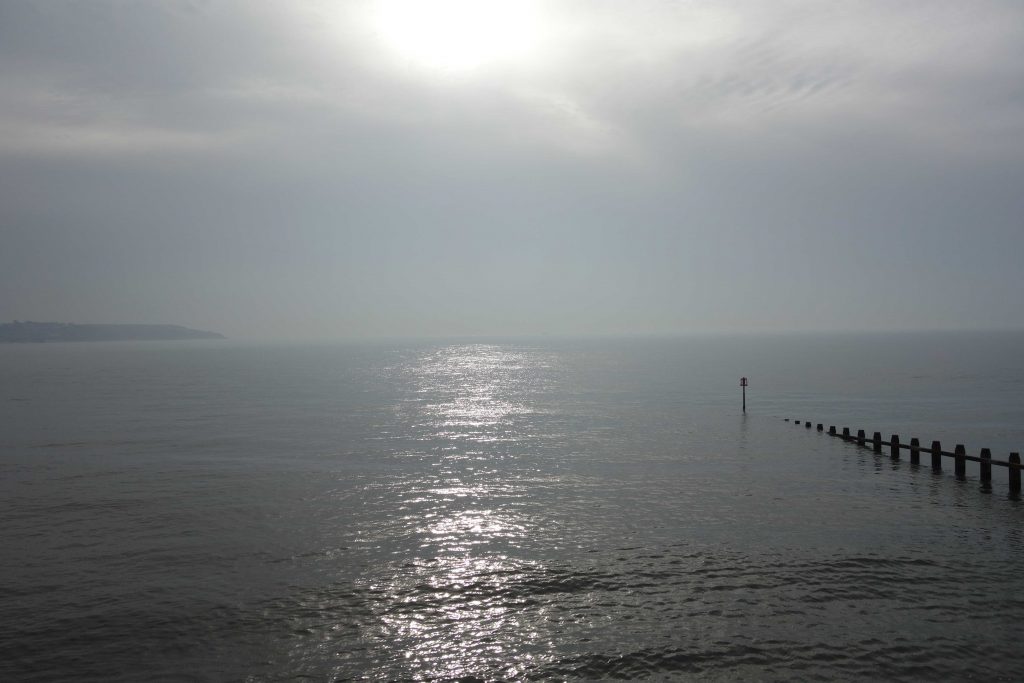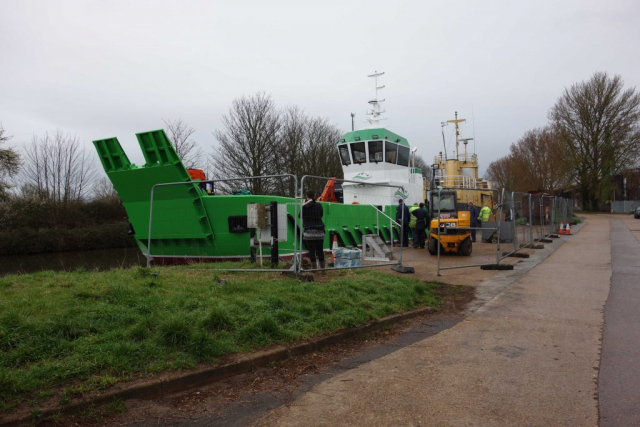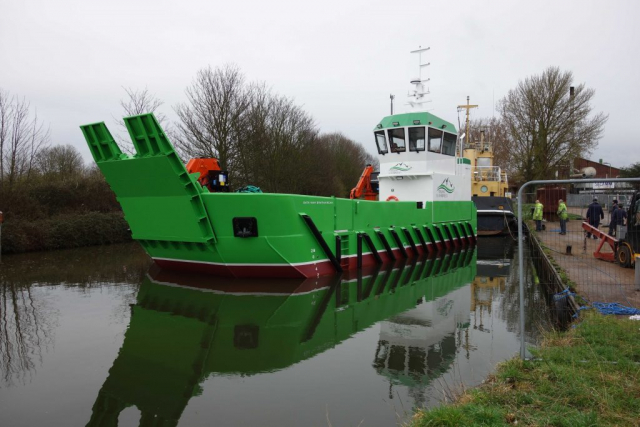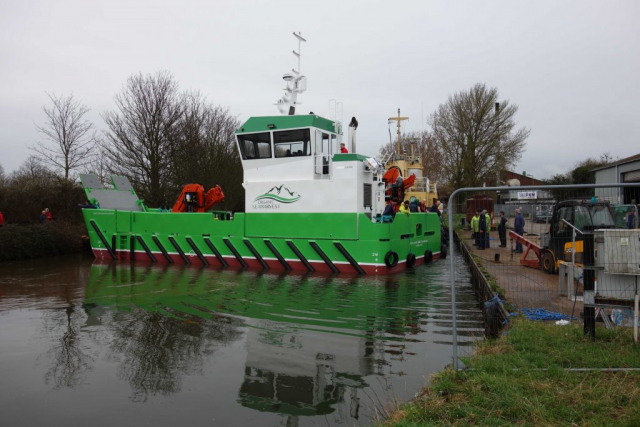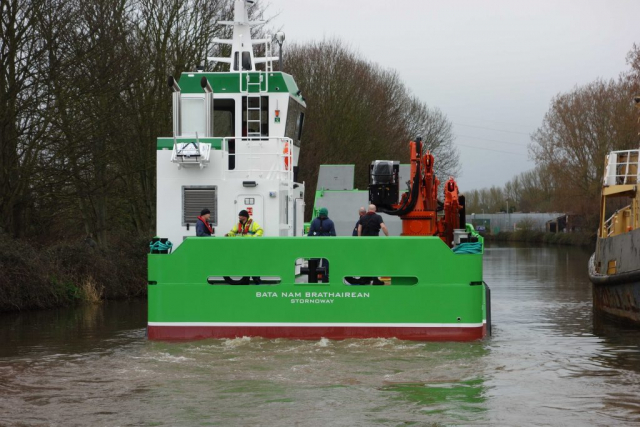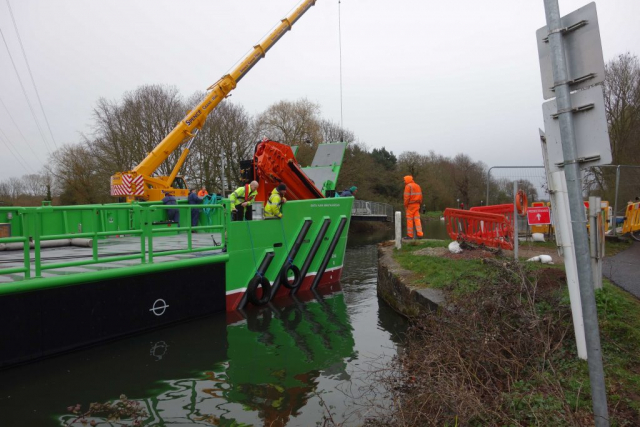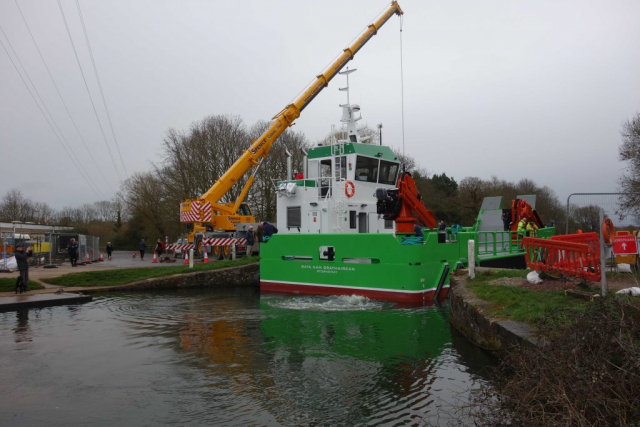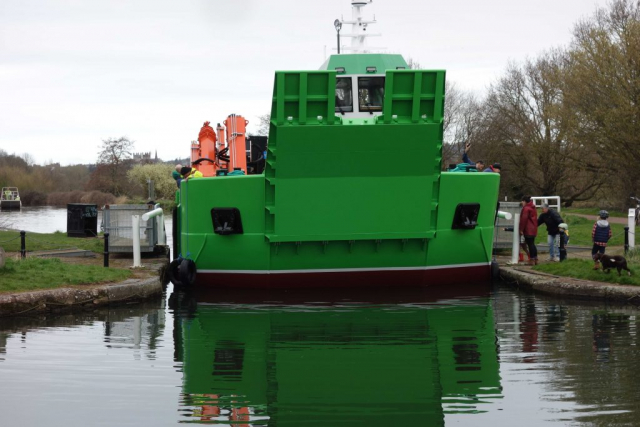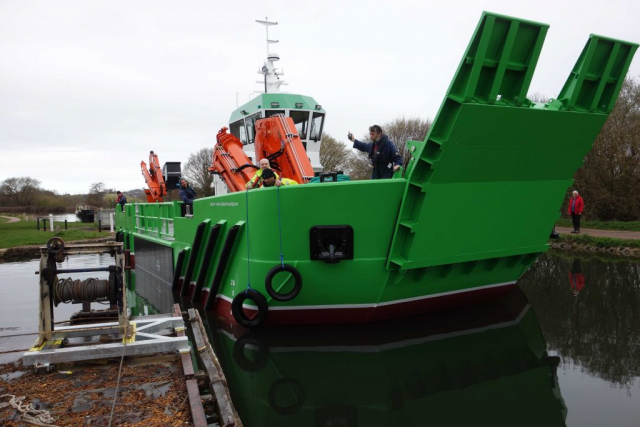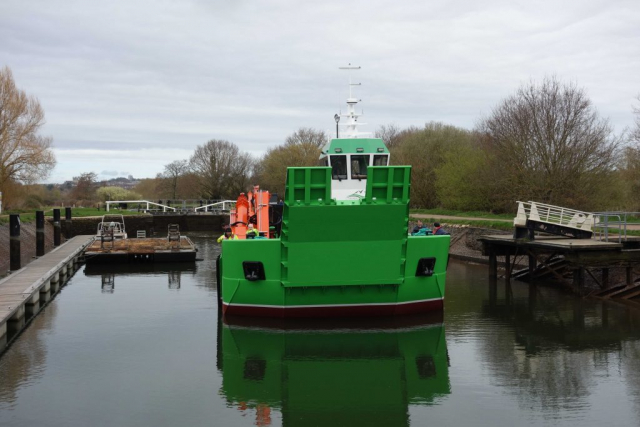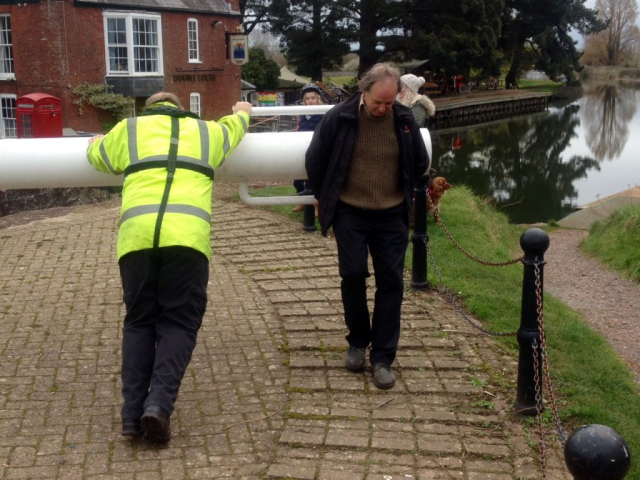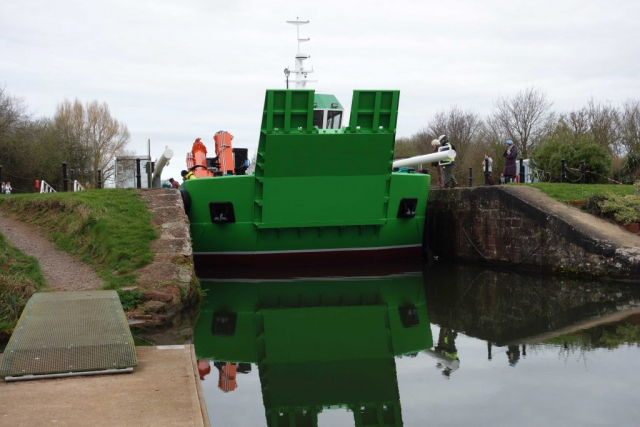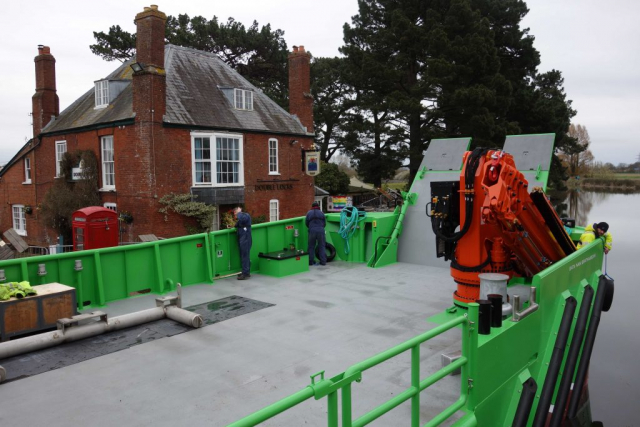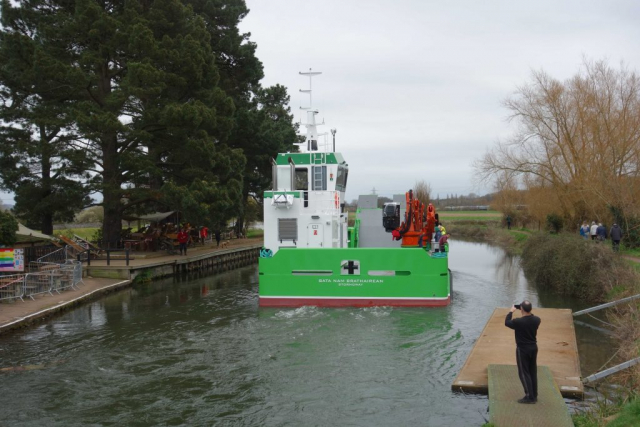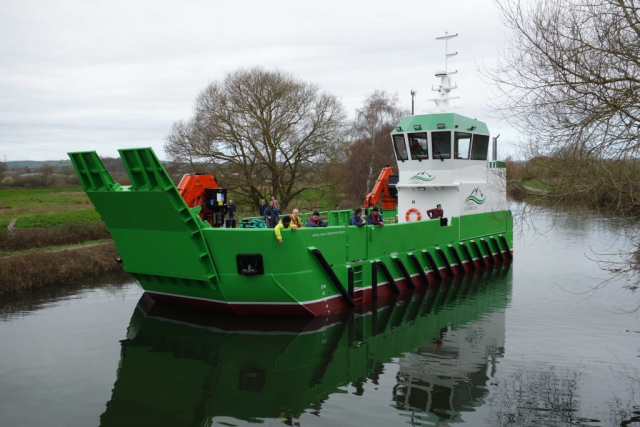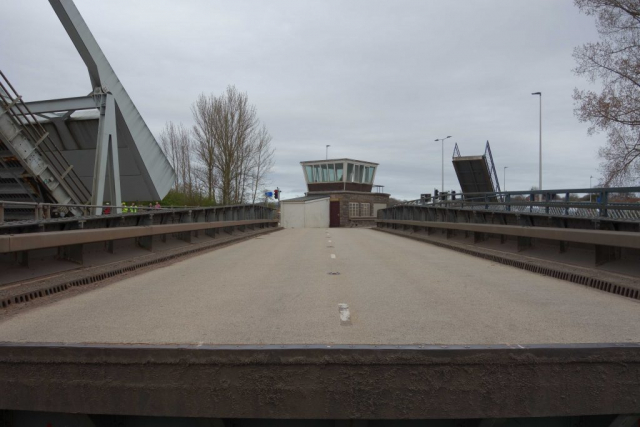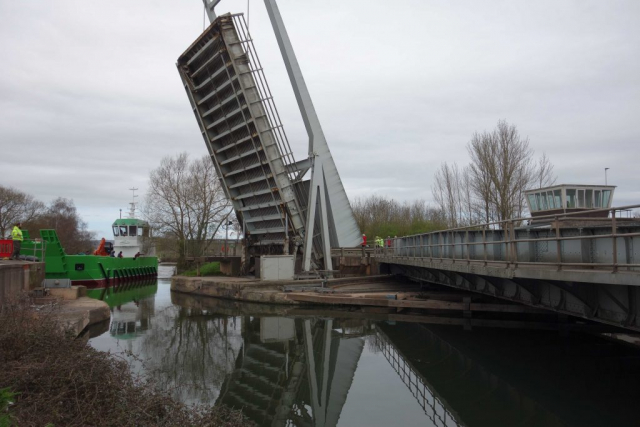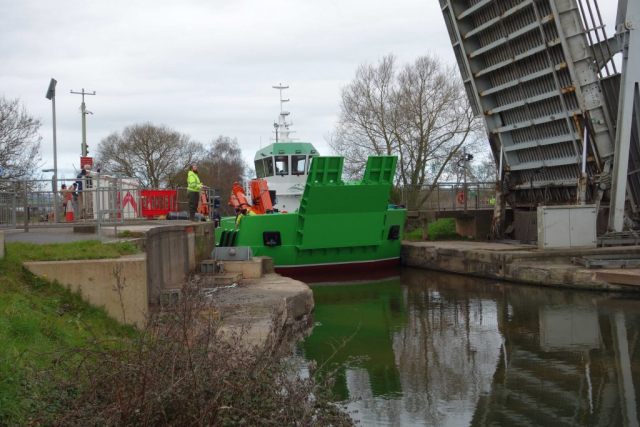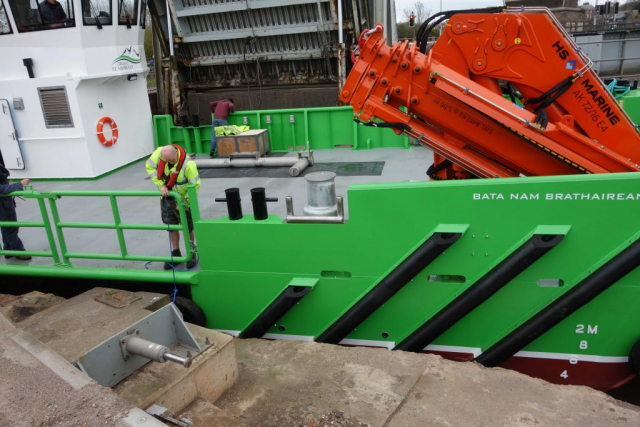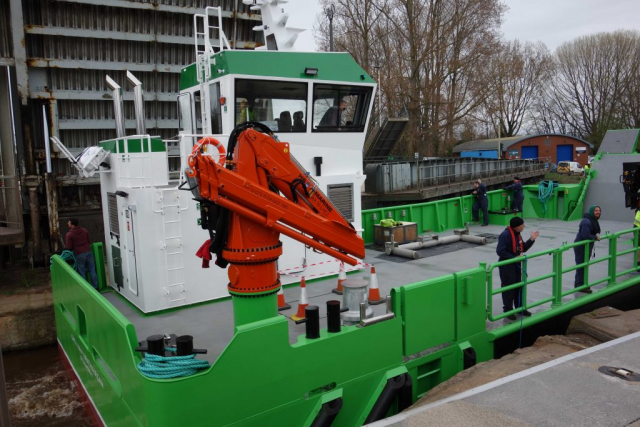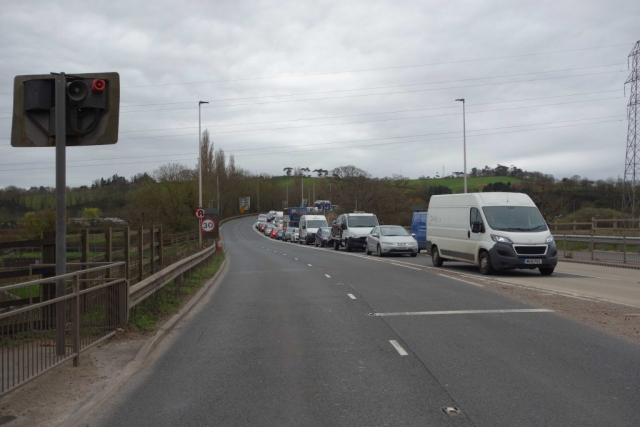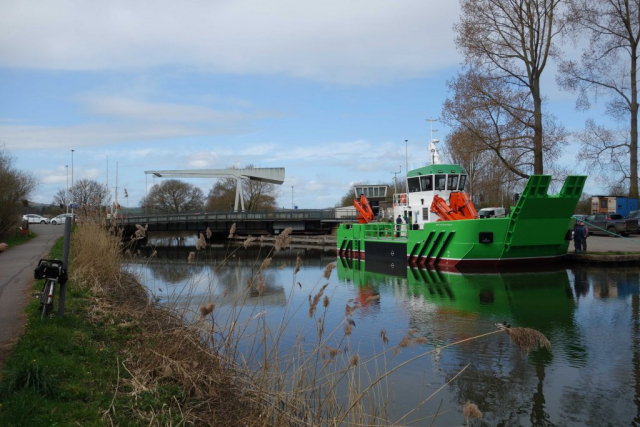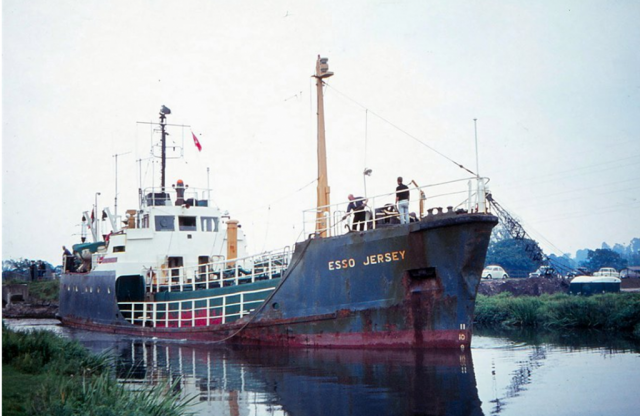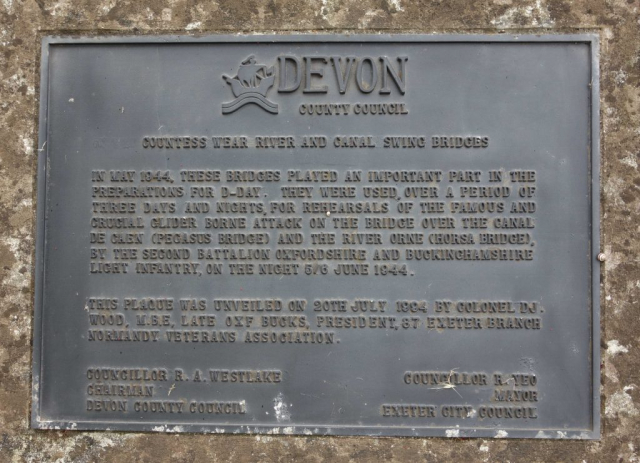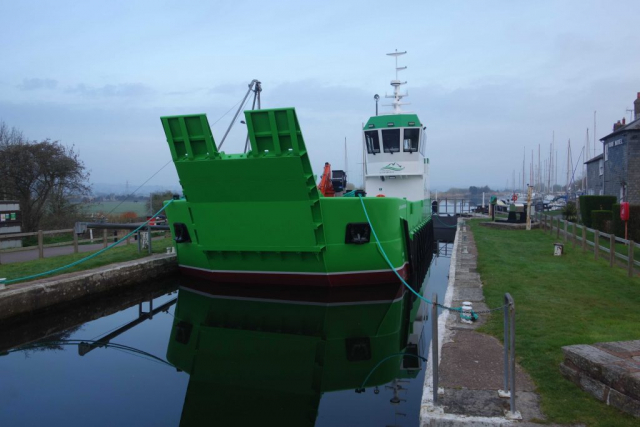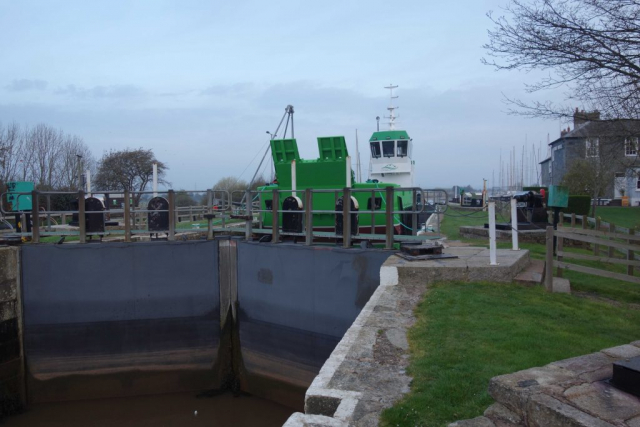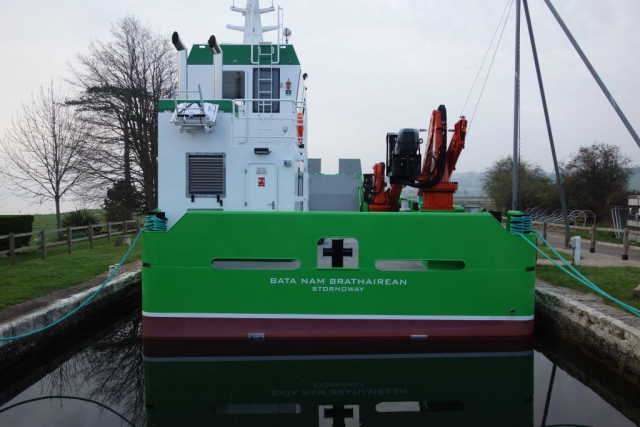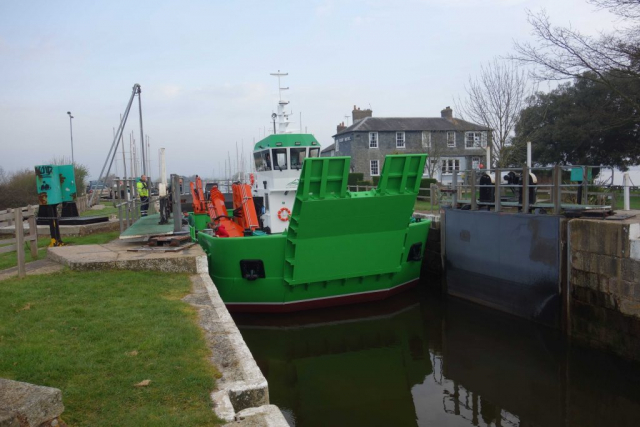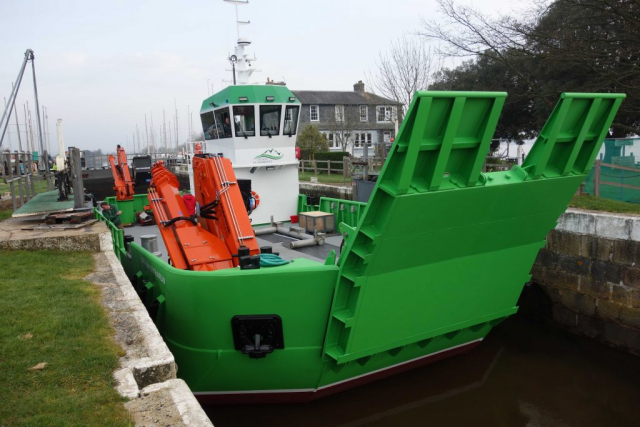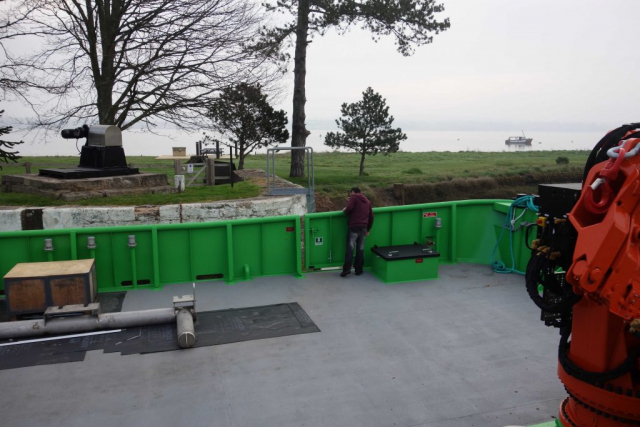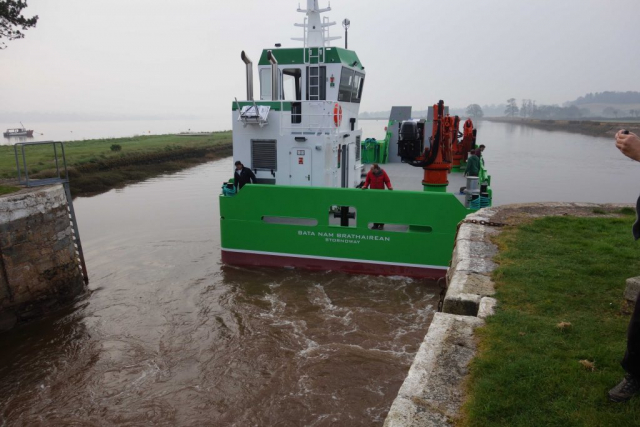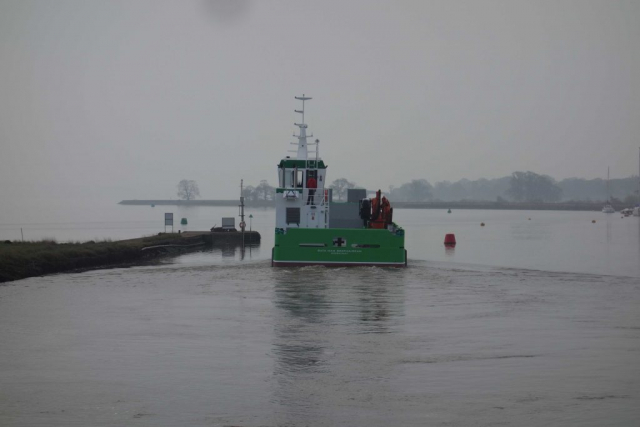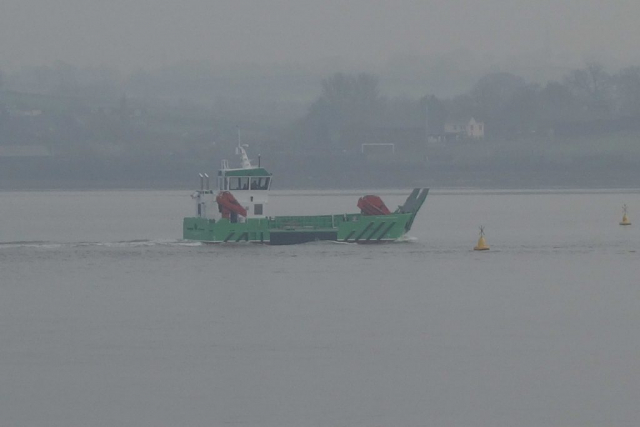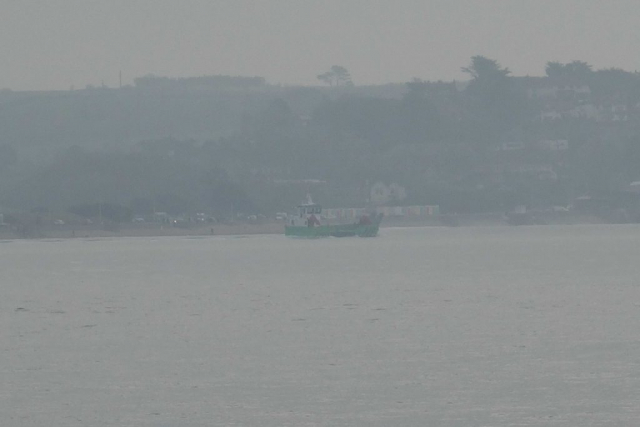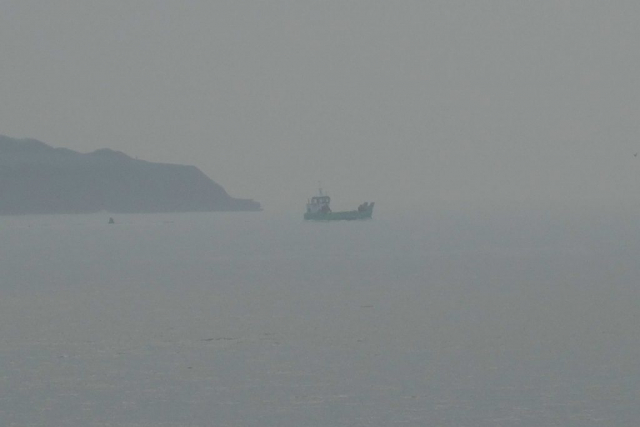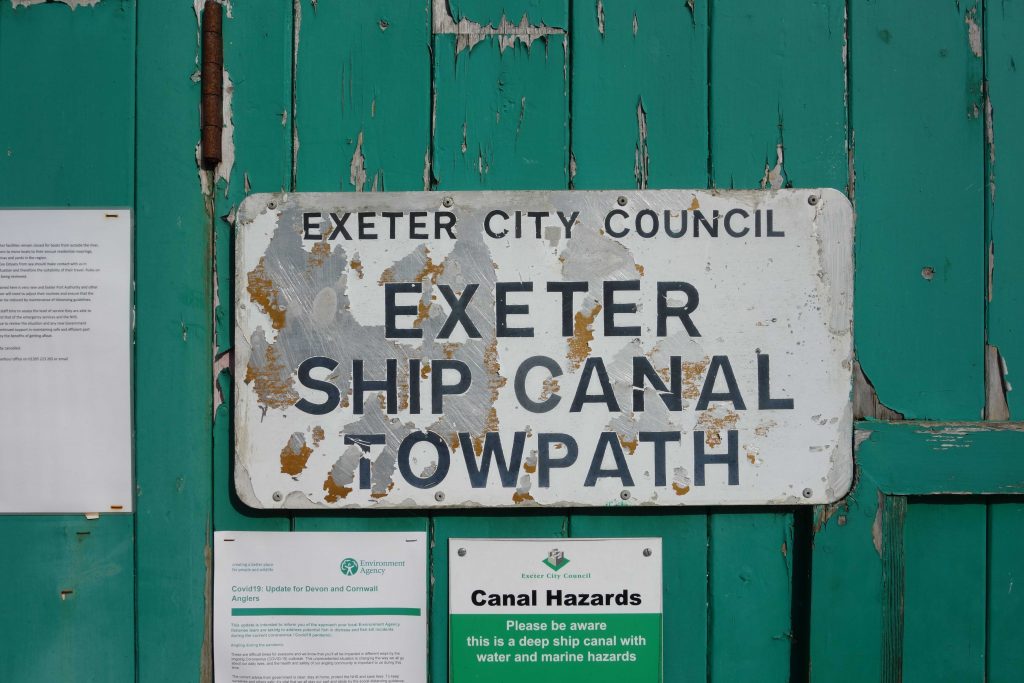
An unprepossessing shed on the site of a former timber store at Gabriel’s Wharf most of the time hides what could be one of Exeter’s best kept secrets; but, occasionally, for those who do not stand on their bikes’ pedals to peer over the screens at what is taking shape, the secret is out when a new vessel is craned into the water and is much admired by passers-by as preparations are made for delivery.
The scout first became aware of this several years ago when, upon enquiring about a moored vessel, he was told that it had been built in the shed; the scout had naturally thought that it had come along the canal to receive some attention.
Since then, he has watched with great interest as a succession of boats has left the factory, although some must have escaped his notice.
He had made vain efforts to find out when the first boat he saw was going to sail, thinking he may reenact the ride he must last have done at least fifty years before, when he had watched Esso Jersey turn in the wide part of the basin and then followed her along the canal on his single-speed Curry’s bicycle.
The “launch” of the latest boat, a 110-tonne steel landing craft for a Scottish salmon fishery, made him more determined to do this but still there was no reliable information; perhaps the firm does not want to encourage people to view the events out of concern for safety. Anyway, work was still being done and arrangements have to be made; a week’s notice is required for the bridges at Countess Wear.
A further complication was that the closure of Clapperbrook Lane in connection with the construction of Marsh Barton Station had given City Council the opportunity to remove Salmonpool (swing) Bridge for refurbishment, replacing it temporarily with a fixed pedestrian crossing.
But the ever-resourceful Szypko, the railway’s man on the ground, persisted with enquiries at the gate and was able to advise that the boat would depart around 0900 on 24th March.
The scout set off from Christow at eight and was cheered to find activity on and around the boat when he arrived at the wharf. He was told that departure was to be at 0930, then shortly that it would be gone ten, as the crane needed to lift the Salmonpool bridge was late. Szypko arrived on his bike and said he’d heard on the radio that Bridge Road would be blocked by the opening of the bridges at 1130.
Gabriel’s Wharf
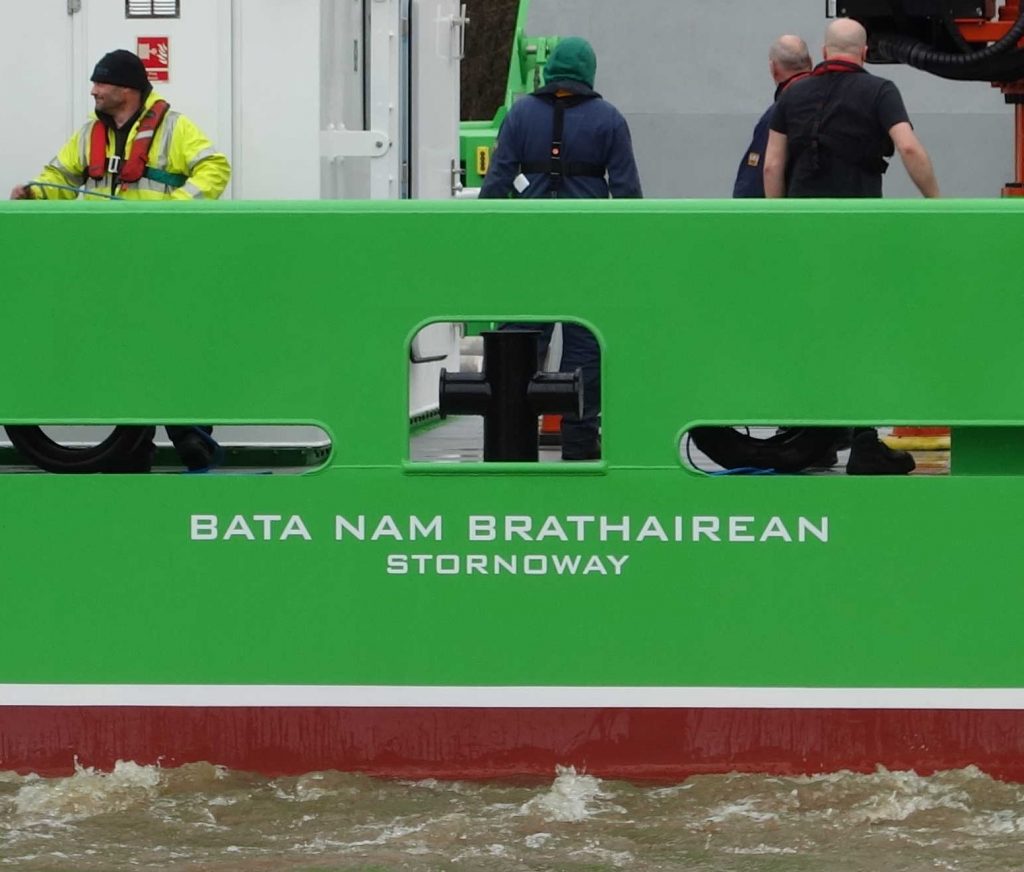
Salmonpool Bridge
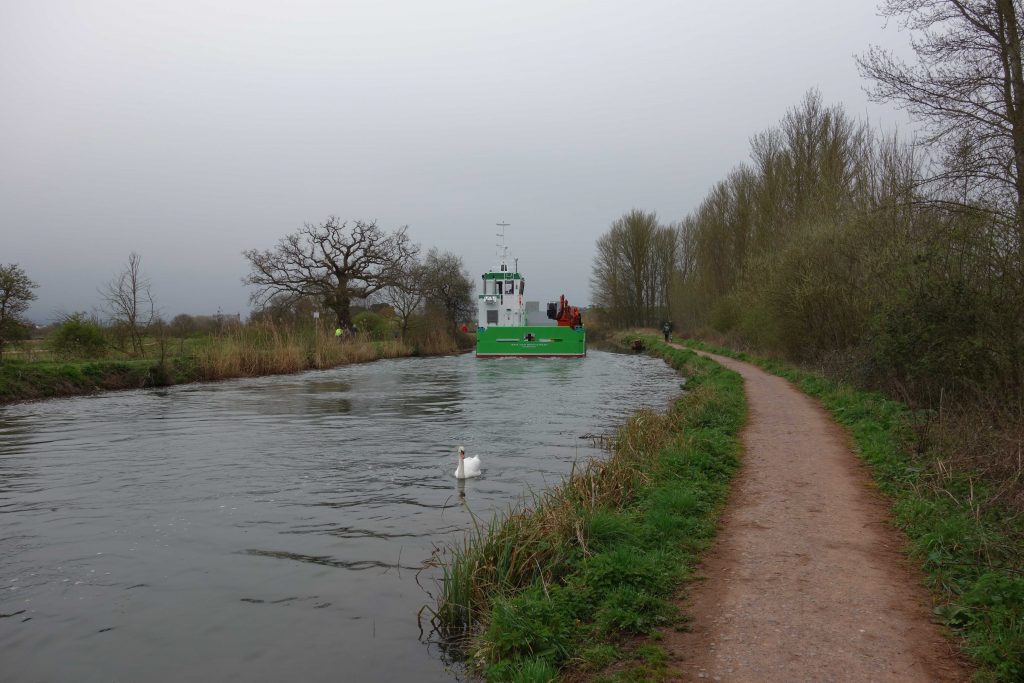
Double Locks
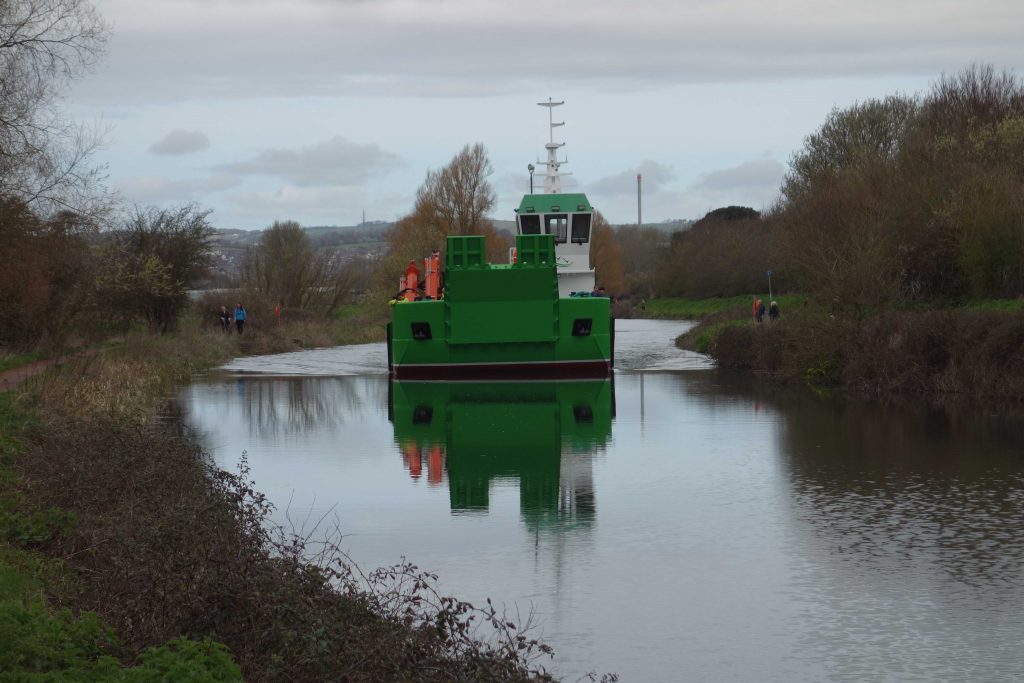
Countess Wear
The caption to the Esso Jersey photo above may not be quite correct. With the ship being under load and upon closer examination of the background, it seems more likely that this is the Exeter side of the swing bridge, not exactly “the same place.”
Pictures of the boat lying at the wharf were sent to friends of the railway and one, Bob, forwarded them to the Western Morning News and B.B.C. A reporter at the Beeb, Johanna Carr, replied. The scribe feels little but contempt for news gatherers and was about to ignore this one, but then thought that it could be a way of discovering the day of departure, so he wired this message.
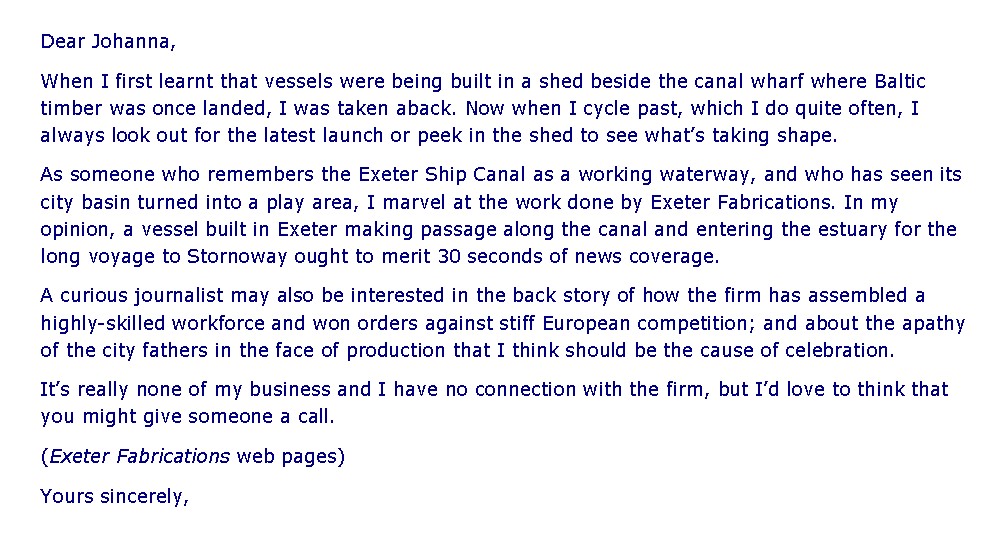
No reply came; good news does not sell. Perhaps the scribe should have added that half the workforce had been struck down by the plague because of a negligent management.
After seeing the new craft moored at Countess Wear, the scout carried on along the canal thinking he may have lunch at Starcross. It not being quite warm enough, he rode home over Haldon, via Black Forest Lodge (30 miles).
More about the builders of this fine craft can be read here.
31st March
Acting on another tip from the intrepid Szypko, who had followed the craft from Countess Wear to Turf the previous day, the scout took the utilicon past the former Exminster Station to the canal and then rode the three parts of a mile to the sea lock, before the crew boarded to sail her to Dartmouth, where she would undergo trials.
It wasn’t long before the tide had risen enough for the canal men to open the gate paddles. When the levels equalized, the powered gates were operated allowing salt and silt to mix with fresh water.
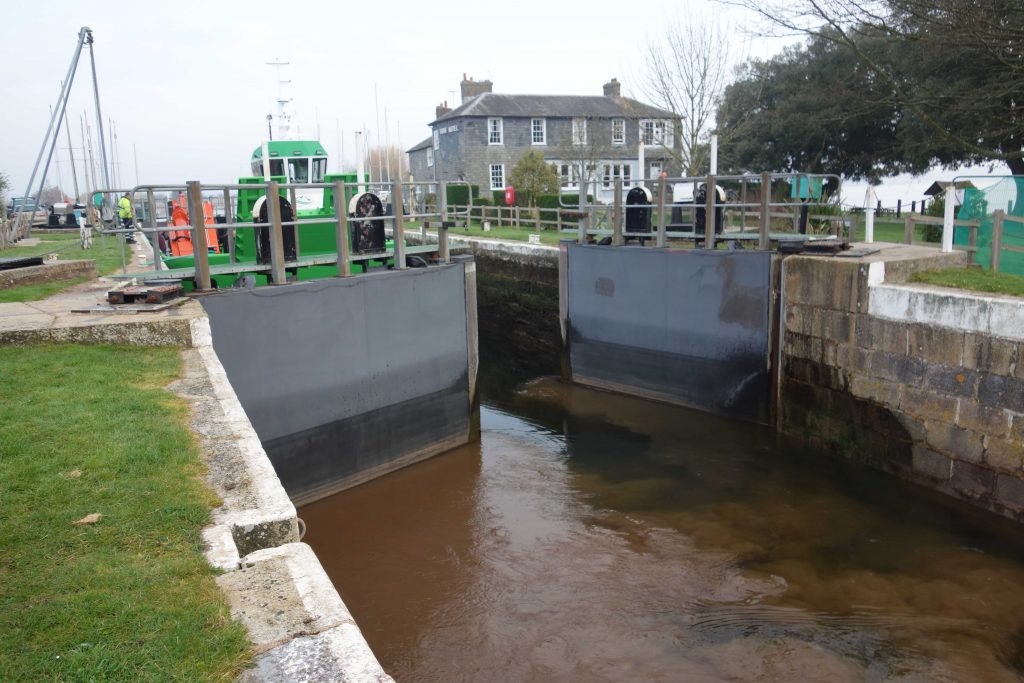
The unbreakfasted scout pedalled as fast as he could to the Warren and scrambled along the dimishing beach to catch these last sights in the sea mist.
It was at this point that the scout wished he had read the instruction manual for the railway’s Cybershot more thoroughly, for he knew as he fumbled with the controls that a real photographer would have been able to make something of this scene.
